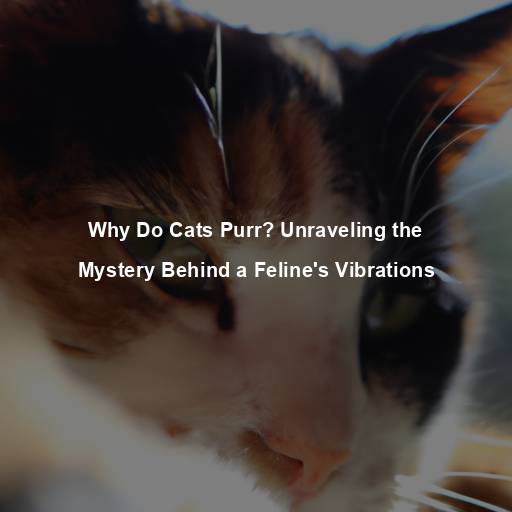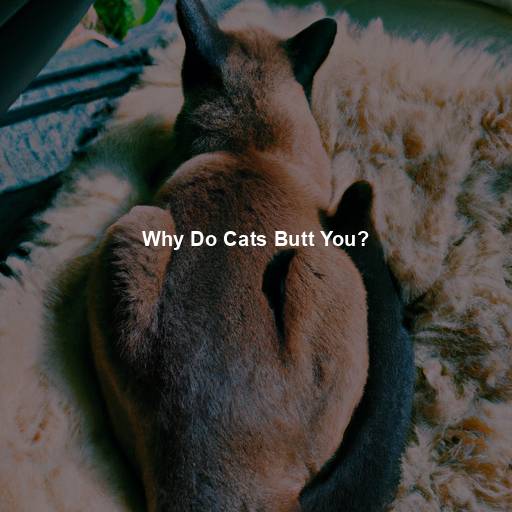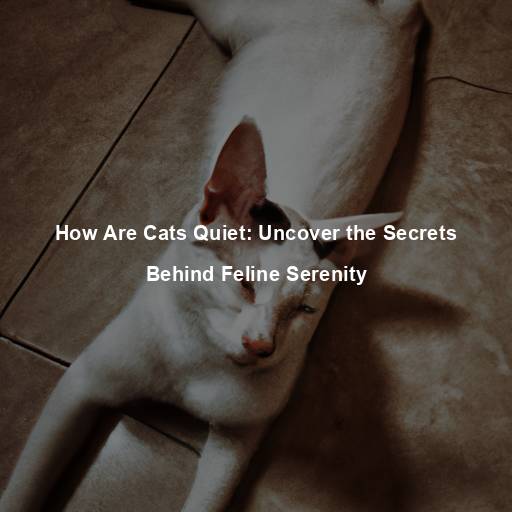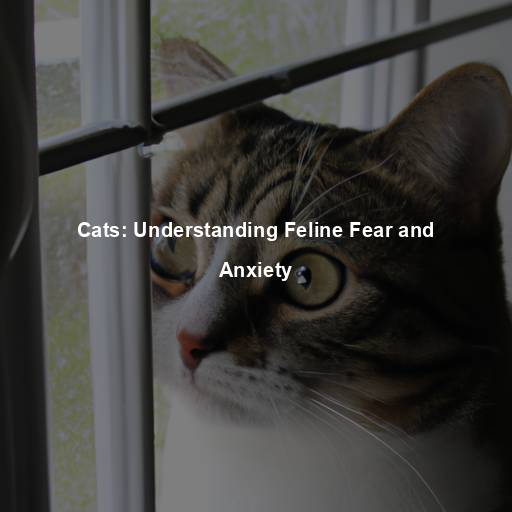Why Do Cats Purr? Unraveling the Mystery Behind a Feline’s Vibrations
Last Updated on November 2, 2023 by Evan
Contents [hide]
- 1 Understanding the Enigma: The Science Behind Cats’ Purring
- 1.1 Exploring the Fascinating Phenomenon
- 1.2 The Mechanics of Purring
- 1.3 A Multitude of Reasons
- 1.4 Unveiling the Benefits: The Positive Impact of Purring
- 1.5 The Purrfect Symphony: Celebrating the Feline Connection
- 1.6 Unraveling the Origins: Evolutionary Perspectives on Purring
- 1.7 The Purrsonalities of Purring: Individual Differences in Cat Vocalizations
- 1.8 Purring in the Wild: Exploring the Behavior of Wild Feline Species
- 1.9 Purring as a Diagnostic Tool: Deciphering Health and Emotional States
- 1.10 Purring Phenomena: Unanswered Questions and Future Directions
- 1.10.1 – The Neurobiology of Purring: What happens in a cat’s brain when they purr? Understanding the neural mechanisms behind purring could provide valuable insights into the emotional and physiological effects of this behavior.
- 1.10.2 – Purring in Wild Felines: Further exploration of purring in wild feline species could shed light on the evolutionary origins and adaptive functions of this behavior across different ecological contexts.
- 1.10.3 – The Genetics of Purring: Investigating the genetic basis of purring could unveil the underlying mechanisms responsible for the development and variations in purring styles among different cat breeds.
- 1.11 In the End, the Purrfect Mystery Persists
- 2 FAQs: Why do cats purr?
- 2.1 What is the purpose of a cat purring?
- 2.2 How do cats produce purring sounds?
- 2.3 Do all cats purr?
- 2.4 Can cats purr when they are scared or in pain?
- 2.5 Are there health benefits associated with a cat’s purring?
- 2.6 Can humans benefit from a cat’s purring?
- 2.7 Are there any other reasons why cats purr?
- 2.8 Do all cats purr the same way?
Understanding the Enigma: The Science Behind Cats’ Purring
Exploring the Fascinating Phenomenon
For centuries, cats have held us in their mesmerizing gazes, leaving us tangled in a web of bewilderment and fascination. Among their myriad of perplexing behaviors, the enigmatic purr holds a special place in the tapestry of feline mystique. Its gentle vibrations have left researchers, animal enthusiasts, and even veterinarians puzzled, longing to unravel the enigma behind this captivating melody. Come with us on a journey as we navigate the labyrinthine pathways of feline science, shedding light on the significance and unraveling the secrets of the purr.
The Mechanics of Purring
Purring is a unique vocalization that is distinct to domestic cats, as well as some wild feline species. It is characterized by a low-frequency, continuous rumbling sound produced during both inhalation and exhalation. Unlike other sounds cats make, such as meowing or hissing, purring originates from the larynx muscles, which vibrate as air passes through them. The contraction and relaxation of these muscles result in the rhythmic purring sound.
A Multitude of Reasons
The enigmatic world of feline communication is filled with delightful mysteries and enigmatic curiosities. While one might naturally assume that the euphonic purring of cats is merely an indication of sheer contentment, the truth is far more captivating and intricate. Cats possess the innate ability to unleash their mesmerizing purr in diverse circumstances, each resonating with a distinctive purpose that leaves us pondering their intricate, yet beautiful, language of sound. Join us as we embark on a beguiling exploration of the myriad reasons behind a cat’s resplendent purr, unraveling the enigma one vibration at a time.
Contentment and Relaxation
When a cat finds itself in a serene and inviting setting, one of the first signals of their contentment can be heard through their gentle purring. This delicate sound, synonymous with relaxation and happiness, resonates in perfect harmony with their surroundings. Whether it’s the feel of tender strokes, the warmth of a welcoming lap, or the embrace of a plush bed, this melodious purr brings a profound sense of tranquility, offering a shared moment of solace for both feline and human alike.
Communication and Bonding
Purring is not just a mere sound cats make; it holds immense significance in their world of communication. These remarkable felines are incredibly social creatures, and purring plays a pivotal role in bonding and fostering trust. From the tender purrs of mother cats to create an atmosphere of security for their kittens to the affectionate vibrations adult cats emit to deepen their connection with their human companions, this enigmatic form of expression leaves us in awe of the profound language of cats.
Self-Soothing and Healing
Believe it or not, purring can also have a therapeutic effect on cats themselves. It has been observed that cats often purr when they are injured, in pain, or unwell. The vibrations produced during purring are thought to have a healing effect on the feline body, aiding in the mending of bones, reducing inflammation, and promoting tissue regeneration. This self-soothing mechanism may explain why cats purr during times of distress or discomfort.
Stress and Anxiety Relief
In addition to healing properties, purring can also serve as a coping mechanism for cats in stressful situations. When faced with anxiety or fear, cats may purr as a means of self-soothing and calming themselves down. The vibrations created by purring release endorphins in the feline brain, promoting relaxation and reducing stress levels. This adaptive behavior helps cats navigate through challenging or unfamiliar circumstances.
Communication with Humans
Cats are known to be highly attuned to human emotions, and they often use purring as a way to communicate with their human companions. When a cat purrs in the presence of a human, it can be interpreted as a sign of trust, affection, and a desire for interaction. It serves as a non-verbal means of expressing their emotions and forming a deeper connection with their human counterparts.
Unveiling the Benefits: The Positive Impact of Purring
The act of purring not only benefits cats themselves but also has a positive impact on their human caregivers. Research has shown that being around a purring cat can have numerous health benefits for humans, both physical and psychological. Let’s explore some of the ways in which purring can positively affect human well-being.
Stress Reduction
There’s something truly magical about the gentle rumble of a cat’s purr. It’s like a mesmerizing melody that effortlessly lulls the chaos of everyday life into a peaceful serenade. Not only does this rhythmic vibration transport us to a realm of tranquility, but it also works wonders on our frazzled nerves, melting away stress and invoking a sublime sense of calm. When you’ve had a challenging day, there’s nothing quite as therapeutic as the enigmatic power of a cat’s purr, offering solace and warmth like a soft embrace from a faithful feline friend.
Lowered Blood Pressure
Recent research has shed light on the fascinating connection between humans and their feline friends. Surprisingly, it turns out that the simple act of spending quality time with a purring cat can actually work wonders for your wellbeing. The mysterious power lies in the gentle vibrations emitted by these furry companions, which coupled with the deep emotional bond we share, can remarkably lower our blood pressure and heart rate. This unexpected revelation might just hold the key to long-term health benefits, particularly for those grappling with hypertension or other cardiovascular concerns.
Easing Anxiety and Depression
There’s a little feline secret that has been quietly whispered among those in the know: the mere presence of a purring cat has the power to work wonders on our mental well-being. As we engage with these mesmerizing creatures, their comforting purrs and soft fur have a curious way of unlocking a floodgate of endorphins within our brains, sending waves of happiness cascading through our souls. In a world where anxiety, depression, and feelings of isolation often loom like thunderclouds, the companionship and solace that cats provide become invaluable lifelines, offering a comforting haven amidst the chaos.
Boosting Immune System
Believe it or not, being around a purring cat may enhance the human immune system. Studies suggest that the vibrations produced by a cat’s purr can stimulate the production of white blood cells, which play a crucial role in fighting off infections and diseases. This immune-boosting effect can contribute to overall improved health and well-being.
Enhanced Healing
The soothing sound of a cat’s purr has long been appreciated by feline enthusiasts, but recent scientific findings have ignited a whole new level of fascination. Studies have discovered that the gentle vibrations emitted by a purring cat may not only bring comfort to our furry friends but also hold the power to help heal our own human bodies. Remarkably, the frequency range of a cat’s purr aligns with those believed to stimulate the regeneration of bones and tissues, sparking the intriguing possibility of harnessing these low-frequency vibrations for medical marvels like accelerating the recovery of fractures. The potential of this unassuming feline trait to unlock healing potential has sent researchers on a perplexing journey, unraveling the secrets of purring and perhaps uncovering a novel approach to enhancing human health.
The Purrfect Symphony: Celebrating the Feline Connection
Cats have a unique ability to captivate us with their mysterious behaviors, and purring is undoubtedly one of their most intriguing qualities. From communicating contentment and bonding with their human companions to providing therapeutic benefits for both cats and humans, purring serves as a testament to the deep connection we share with our feline friends.
As we dive into the intricate workings of feline purring, a realm of wonderment unfolds before our inquisitive eyes. Each purr carries with it a profound tale, revealing the enigmatic depths of the cat kingdom. So, the next time your beloved feline companion unleashes their melodic rumble, take a moment to immerse yourself in the inexplicable bond that exists between you and bask in the inexplicable charm of their purring prowess. It is a demure symphony that speaks volumes of love, trust, and camaraderie, defying verbal articulation and stirring our souls to their very core.
Unraveling the Origins: Evolutionary Perspectives on Purring
When it comes to the evolutionary origins of purring, researchers have put forth various theories. One prevailing hypothesis suggests that purring may have developed as a means of communication between mother cats and their kittens. The gentle vibrations of purring can act as a maternal reassurance, signaling safety and comfort. This communication mechanism strengthens the bond between mother and offspring, ensuring the survival and well-being of the young.
There’s an interesting theory making the rounds that suggests cats might purr to communicate their peaceful intentions, especially in social settings where conflicts can arise. This line of thought suggests that purring serves as a way for felines to signal their desire to avoid confrontation and keep harmony within their group intact. It’s worth noting that this hypothesis supports the observation of cats purring during social interactions, like grooming sessions or when they’re cozying up to one another for a restful nap.
The enigmatic allure of a cat’s purr has fascinated researchers for years, leaving them perplexed by its true evolutionary purpose. As we delve into the intricate world of feline communication, one thing becomes abundantly clear – purring is far from a one-dimensional vocalization. Its adaptability in different scenarios hints at a multifaceted nature, implying that this mesmerizing sound serves a multitude of functions depending on the situation at hand. Despite its elusiveness, the enigmatic power of the purr continues to captivate us, inviting further exploration into the depths of the feline kingdom.
The Purrsonalities of Purring: Individual Differences in Cat Vocalizations
When it comes to purring, domestic cats have quite the range of styles that can leave us scratching our heads in wonder. It’s fascinating to discover that no two purrs are quite the same, with each feline friend boasting their own purring masterpiece. From the bold and booming purrs that command attention to the delicate and mysterious purrs that require a keen ear to catch, the variety is perplexing. What’s even more intriguing is that these purring styles can give us a glimpse into a cat’s personality, breed traits, or even the unique makeup of their vocal cords.
There is a fascinating world of feline sounds, where every breed has its own enchanting purr. From the captivating low hum of the Persian or the velvety purr of the British Shorthair, to the melodic and slightly higher notes of the Siamese or Oriental, each cat breeds adds its unique touch to the symphony of purring. It’s a mesmerizing tapestry of vocalizations that celebrates the intricate and diverse language of our beloved feline friends.
Purring in the Wild: Exploring the Behavior of Wild Feline Species
Who would have thought that the soothing sound of purring extends beyond our sleepy house kitties? Prepare to have your mind blown as we explore the surprising fact that not only domestic cats, but also their wild counterparts possess this enchanting ability. From majestic cheetahs and elusive cougars to nimble bobcats and exotic feline species like the Eurasian lynx and African serval, the world of purring expands into the untamed wilderness. Brace yourself for a journey filled with wonder and perplexity as we delve into the secret lives of these mesmerizing creatures.
It is quite intriguing to discover that purring is not a universal trait among the Felidae family. Surprisingly, majestic big cats like lions, tigers, and leopards lack the ability to purr, a distinction attributed to anatomical disparities in their vocal apparatus. In place of this gentle rumble, they express themselves through a symphony of roars, growls, and chuffs. This absence of purring in larger feline species only enhances the enigmatic allure that sets them apart from their smaller, purr-endowed counterparts.
Purring as a Diagnostic Tool: Deciphering Health and Emotional States
Beyond its enigmatic allure, purring can also serve as a valuable diagnostic tool for cat owners and veterinarians. The nuances and patterns of a cat’s purring can provide insights into their overall health and emotional well-being. By paying close attention to the context and characteristics of purring, we can decipher valuable information about our feline companions.
For example, changes in a cat’s purring behavior, such as sudden alterations in frequency or intensity, could indicate underlying health issues. A decrease in purring accompanied by other signs of distress might signal pain, discomfort, or anxiety. Conversely, an increase in purring alongside symptoms like lethargy or loss of appetite could warrant a visit to the veterinarian. Monitoring changes in purring patterns can help us detect potential health problems earlier, facilitating timely intervention and care.
In a world where cats reign supreme, delving into the intricate universe of purring goes beyond mere curiosity. Unraveling the enigmatic tapestry of emotions tied to this humble feline sound holds the key to unlocking their happiness and nurturing their wellbeing. From the soothing whispers of contentment to the haunting whispers of anxiety, deciphering the cryptic language of purring opens a gateway to tailoring our interactions and surroundings to cater to their every whim, ensuring a life filled with contentment and utter fulfillment for our beloved furry companions.
Purring Phenomena: Unanswered Questions and Future Directions
The enigmatic world of purring has been a subject of intense exploration, leaving us in a perpetual state of wonder. Despite the strides we have made in unraveling its mysteries, a plethora of uncharted territories remains, intricately weaving a tapestry of perplexity that bewitches the minds of researchers. Delving deeper into this enigma, we find ourselves oscillating between fascination and bewilderment, trying to comprehend the nuances that lie within the realm of purring. From deciphering its evolutionary purpose to unraveling its profound effects on feline well-being, these tantalizing avenues of investigation beckon us to navigate the labyrinth of curiosity that shrouds this bewitching phenomenon.
– The Neurobiology of Purring: What happens in a cat’s brain when they purr? Understanding the neural mechanisms behind purring could provide valuable insights into the emotional and physiological effects of this behavior.
– Purring in Wild Felines: Further exploration of purring in wild feline species could shed light on the evolutionary origins and adaptive functions of this behavior across different ecological contexts.
– The Genetics of Purring: Investigating the genetic basis of purring could unveil the underlying mechanisms responsible for the development and variations in purring styles among different cat breeds.
In our quest to unlock the enigmatic realm of feline behavior and communication, it becomes imperative to persist in deciphering the enigma that is purring. By delving into the uncharted territories of unanswered inquiries and diving even deeper into the complexities that surround this mesmerizing sound, we have the opportunity to elevate our admiration for the captivating world of cats, while simultaneously forging a stronger connection between the human species and our beloved feline counterparts.
In the End, the Purrfect Mystery Persists
Despite the scientific advancements and the insights gained, the true essence of purring remains a beautiful enigma. It is a testament to the complex and profound relationship between humans and cats, transcending language and bridging the gap between species. So, the next time you hear the gentle vibrations of your feline friend’s purr, take a moment to marvel at the wonders of nature and embrace the enduring mystery of why cats purr.
FAQs: Why do cats purr?
What is the purpose of a cat purring?
Cats primarily purr as a means of communication. It is their way of expressing contentment, relaxation, and general happiness. However, purring can also serve various other purposes, such as soothing themselves when anxious, injured, or in pain. Additionally, mother cats purr to establish a bond with their kittens and reassure them.
How do cats produce purring sounds?
The exact mechanism behind a cat’s purring sound is not yet fully understood, but it is believed to originate from the laryngeal muscles in their voice box, or larynx. When a cat purrs, these muscles repeatedly contract and relax, causing the vocal cords to vibrate. As the cat breathes in and out, the vibrations create the distinctive purring sound we associate with feline contentment.
Do all cats purr?
It’s a fact that not all feline creatures purr; the peculiarity lies in the vast world of wild cats that roam our planet. Surprisingly, hefty and fierce creatures like lions and tigers don’t possess the finesse to purr, leaving us in awe of their enigmatic silence. Purring seems to be a specialty reserved for the smaller, more delicate counterparts, like house cats, swift cheetahs, and stealthy bobcats. Nature never ceases to bewilder us, as the absence of this soothing rumble in the wild felines suggests that survival doesn’t hinge on the comfort of purring vibrations.
Can cats purr when they are scared or in pain?
Yes, cats can sometimes purr when they are scared, anxious, or in pain. It may seem counterintuitive, but purring can serve as a self-soothing mechanism for cats in distress. When they are in pain or frightened, purring helps them calm down and provides a sense of comfort. It is important to note that if a cat is purring excessively or in conjunction with other concerning symptoms, it is advisable to seek veterinary care to determine the underlying cause.
Are there health benefits associated with a cat’s purring?
You won’t believe the incredible health perks that come with a simple act of purring. Recent research suggests that the mesmerizing vibrations created during a purr-a-thon can actually work wonders for our feline friends. From boosting bone density to easing inflammation and even aiding in tissue repair, the soothing hum of purring is a powerful force. Added bonuses include improved respiratory health and a deep sense of relaxation that can elevate our kitties’ overall happiness and vitality. Get ready to be amazed by the mysterious benefits of a purr-fectly contented cat!
Can humans benefit from a cat’s purring?
Yes, many humans find the sound of a cat’s purring to be soothing and comforting. Just as cats purr to express contentment, humans often perceive it as a sign of relaxation and happiness. Research suggests that exposure to a cat’s purring can have therapeutic benefits for humans, potentially reducing stress, blood pressure, and promoting a sense of calmness. The rhythmic vibrations produced by purring have even prompted the development of devices that simulate these vibrations for therapeutic purposes.
Are there any other reasons why cats purr?
Cats, those enigmatic creatures of the feline world, possess a fascinating repertoire of behaviors that never cease to bewilder and captivate us. One such behavior, the purring phenomenon, has long been a subject of curiosity. While commonly associated with communication and self-soothing, recent research suggests that the motivations behind this enigmatic act may run deeper than meets the eye.
It appears that some cats have cunningly discovered the power of purring as a means of getting their humans’ undivided attention. With a slight vibration of their vocal cords, they skillfully manipulate their owners into showering them with affection, treats, and all forms of feline indulgence. Indeed, it seems that this purring prowess serves as a secret weapon, deployed strategically to fulfill their every desire.
Yet, the intrigues of the feline world do not end there. Experts and feline enthusiasts propose an alternative theory – that cats may purr to maintain their physical well-being. This peculiar behavior could act as a form of low-impact exercise, discreetly helping our beloved companions tone their muscles, keeping them agile and robust.
In essence, the mystery surrounding the purring prowess of cats remains as perplexing as ever. Whether cats employ their purring as an artful method of manipulation or a covert means of maintaining their fitness, one thing is clear – these majestic creatures continue to leave us in awe, forever reminding us of the depth of their enigmatic nature.
Do all cats purr the same way?
Contrary to popular belief, cats are not a one-size-fits-all when it comes to purring. While the underlying purring mechanism is shared, it’s the manifestation of this soothing sound that showcases their individuality and breeds’ specific traits. You might come across felines with booming purrs that resonate throughout the room, while others might possess a more delicate purring style, akin to a gentle whisper. And let’s not forget about those Siamese kitties, with their notable vocal prowess, who might even boast a distinct purring symphony that’s exclusive to their breed. Just like their personalities, each cat’s purr possesses its own enigmatic charm, leaving us in awe of their uniqueness.







